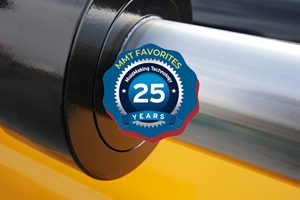How to Determine The Real Cost Of Your End Mill
More often than not, the first question a moldmaker asks when presented with an end mill is, “How much does this tool cost?” For this, there is really only one answer, “I can tell you the price, but I cannot tell you the cost until you run the tool.”A higher priced tool can ultimately prove to cost much less than its lower priced counterpart.
More often than not, the first question a moldmaker asks when presented with an end mill is, “How much does this tool cost?” For this, there is really only one answer, “I can tell you the price, but I cannot tell you the cost until you run the tool.”
A higher priced tool can ultimately prove to cost much less than its lower priced counterpart. For example, if a tool that is priced three times higher performs five times better, its actual cost is 40 percent less than the less expensive tool.
Certainly, it is true that the premium product will not always provide five times the performance, but what is equally true is that the price is not always three times more. Often the price difference is smaller, but the principle remains the same. The difficulty is to accurately quantify a tool’s performance.
While it is possible, in theory, to establish a range of performance for a particular tool, actual performance can vary based on a multitude of variables including the machine tool, material, toolholding, workholding and the coolant/lubricant used. This means that the only accurate method to evaluate a tool’s performance is through testing under real-world conditions, in the particular operation in which the tool will be applied.
Quantifying a tool’s performance, particularly in a high-volume/mass production environment, is a fairly straightforward exercise. The performance of a cutting tool can be measured against either time in the cut or the quantity of parts generated. However, in a lower volume setting like moldmaking—wherein the life span of one tool can extend through several different applications or repeated applications that occur on an irregular basis—attaining an accurate assessment on tool life and performance can require a greater level of commitment and effort, or even the implementation of specific new technology—such as toolholders equipped with Radio Frequency Identification (RFID) technology to monitor a tool’s usage.
It is common for tooling companies to offer test programs. These programs are symbiotic arrangements in which the supplier gains an opportunity to showcase new product while the customer gains the opportunity to enhance the manufacturing process. Enhancements may go beyond simply increasing tool life; the savings achieved by minimizing tool changes and downtime should also be considered. Additionally, the knowledge that can be gained through testing can be invaluable: new ideas, methods or strategies can be realized, and process steps can be combined or eliminated through exposure to new and developing cutting tool technologies.
The following example illustrates how important this testing process is; how the right end mill, even when higher priced, provides significant savings over a less expensive option. In a recent application using a premium end mill, the actual cost of machining a single part was reduced by 50 percent. Because the tool included diamond polished flutes, coolant through the tool and preparatory edge geometry, a 22% increase in cutting speed and an 85% increase in feedrate were realized, and the premium priced tool was able to complete 41 parts in the same time as the competitive tool completed 9 parts. When calculated with a constant tool life and machine cost per hour, the cost per part was 51 percent less, even though the premium tool was twice the price. In fact, in order to match this level of overall performance, the lower priced tool would have to cost 70 per cent less.
Now how much does your tool cost?
Related Content
Maintaining a Wire EDM Machine
To achieve the ultimate capability and level of productivity from your wire EDM on a consistent, repeatable and reliable basis, regular maintenance is a required task.
Read MoreHow to Correctly Size a Hydraulic Cylinder
This week Randy shares steps for correctly sizing a hydraulic cylinder on a mold.
Read MoreMaking Quick and Easy Kaizen Work for Your Shop
Within each person is unlimited creative potential to improve shop operations.
Read MoreThe Ins and Outs of Hot Runner Temperature Control
A training checklist that explains the why and how of proper hot runner temperature control and system management.
Read MoreRead Next
How to Use Strategic Planning Tools, Data to Manage the Human Side of Business
Q&A with Marion Wells, MMT EAB member and founder of Human Asset Management.
Read MoreReasons to Use Fiber Lasers for Mold Cleaning
Fiber lasers offer a simplicity, speed, control and portability, minimizing mold cleaning risks.
Read MoreHow to Use Continuing Education to Remain Competitive in Moldmaking
Continued training helps moldmakers make tooling decisions and properly use the latest cutting tool to efficiently machine high-quality molds.
Read More




















